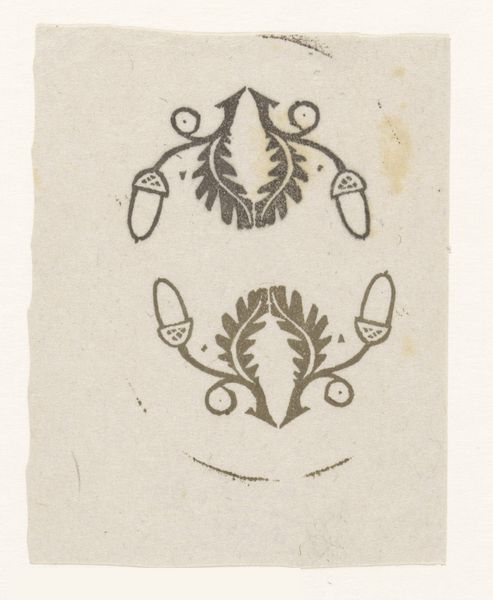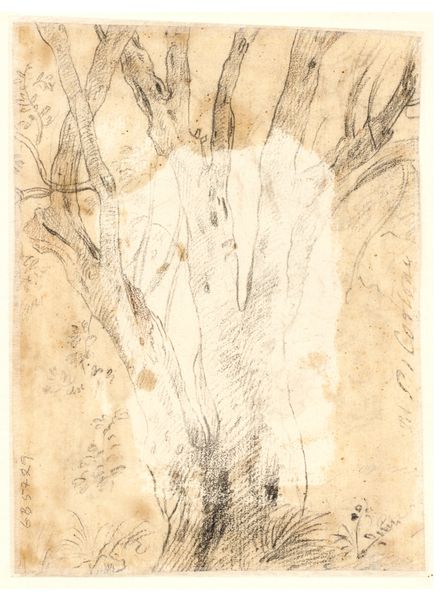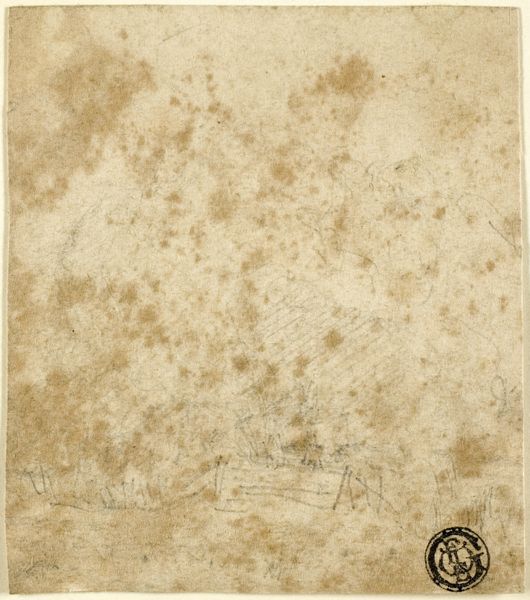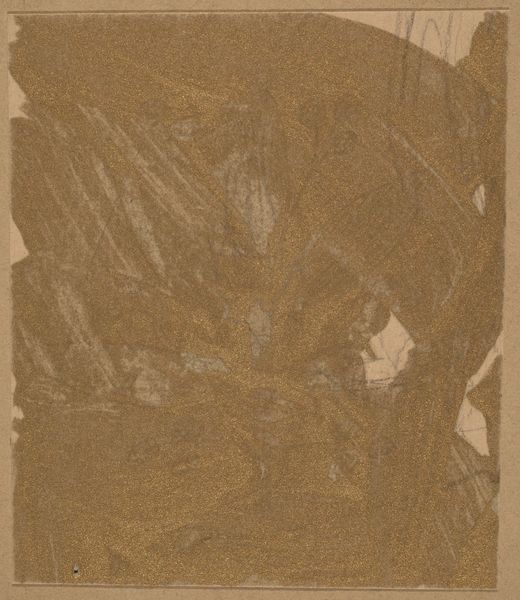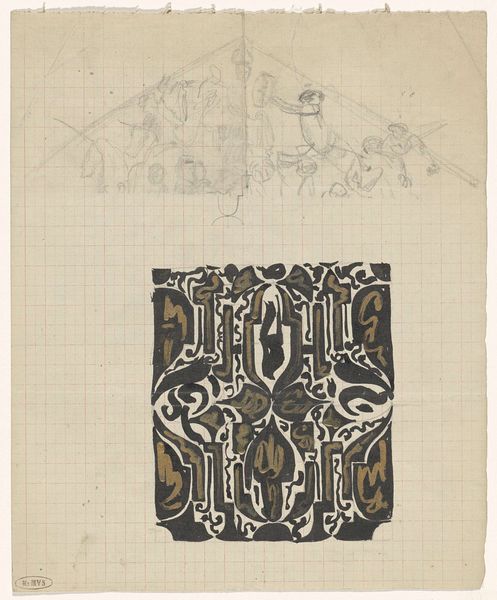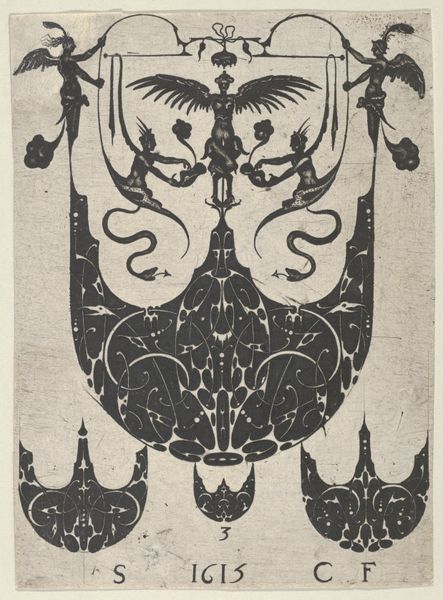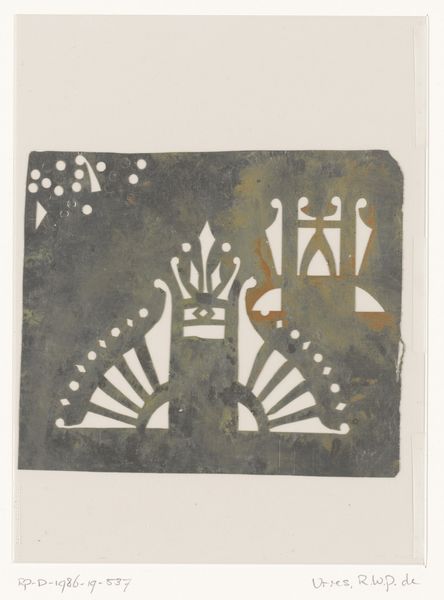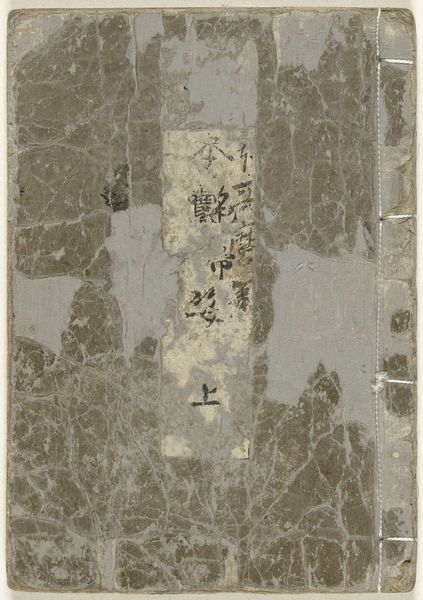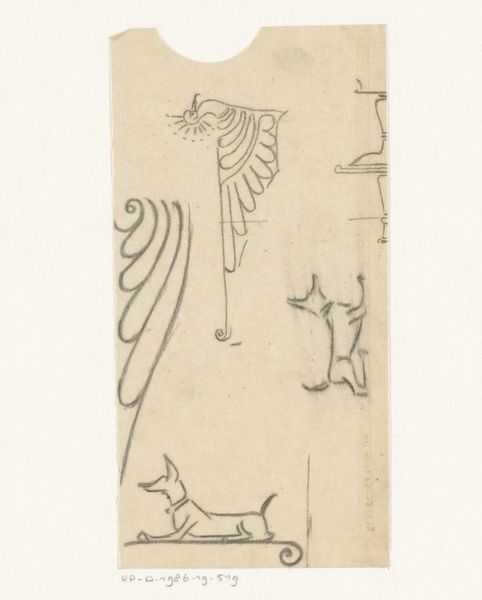
drawing, paper, ink
#
drawing
#
flower
#
paper
#
ink
#
abstraction
#
symbolism
#
watercolour illustration
Dimensions: height 255 mm, width 163 mm
Copyright: Rijks Museum: Open Domain
Curator: Hmm, what an intriguing sketch. There's a stark, almost ghostly presence. Two white floral forms dance on a somber, gray ground. Editor: You’re right, it has a fragile, fleeting feel. This is a drawing called “Bloem,” flower in Dutch, by Carel Adolph Lion Cachet. He worked on this one somewhere between 1874 and 1945. The Rijksmuseum holds it, so we're lucky to have access. It's ink on paper, not what you might expect for a vibrant floral. Curator: Ah, Cachet! That explains a lot. His roots are deep in the Symbolist movement, aren't they? Those stark whites are shouting something about hidden meanings. Is it death, rebirth? Perhaps simply the unseen energies within life itself? Editor: Well, Symbolism thrived on subjective interpretation, that’s definitely a lens here. Cachet worked during a fascinating period when artists grappled with modernity. Abstraction began challenging traditional forms. Notice the delicate, almost ethereal quality, it resists photorealism, choosing suggestion over description. These kinds of aesthetic choices reflect the complex social shifts occurring as society itself flowered into modernism, then was torn asunder by conflict. Curator: It makes me think of Japanese ink wash painting, actually. That spareness, the way the ink both defines and suggests form… Is he using negative space as another bloom? The ground feels like rich soil. This flower is planted and pushing! Editor: And its presence here, exhibited in the museum, serves a distinct role. "Bloem," although modest in scale, claims space in a public sphere typically reserved for bombastic portraits and historical scenes. Consider how institutions elevate the status of mundane subjects. It is saying "Flowers can be Art too," expanding and democratizing that canon in small but measurable ways. Curator: Which makes the sketch quietly subversive. We see an assertion of beauty residing within something as seemingly insignificant as a bloom, resisting the darkness threatening to overtake it. Thank you, Carel, for showing us the light in a fragile flower! Editor: So, next time you see a simple flower, think about Cachet's ink strokes—think about how something small can embody defiance, history, and beauty, all in the same delicate lines.
Comments
No comments
Be the first to comment and join the conversation on the ultimate creative platform.

